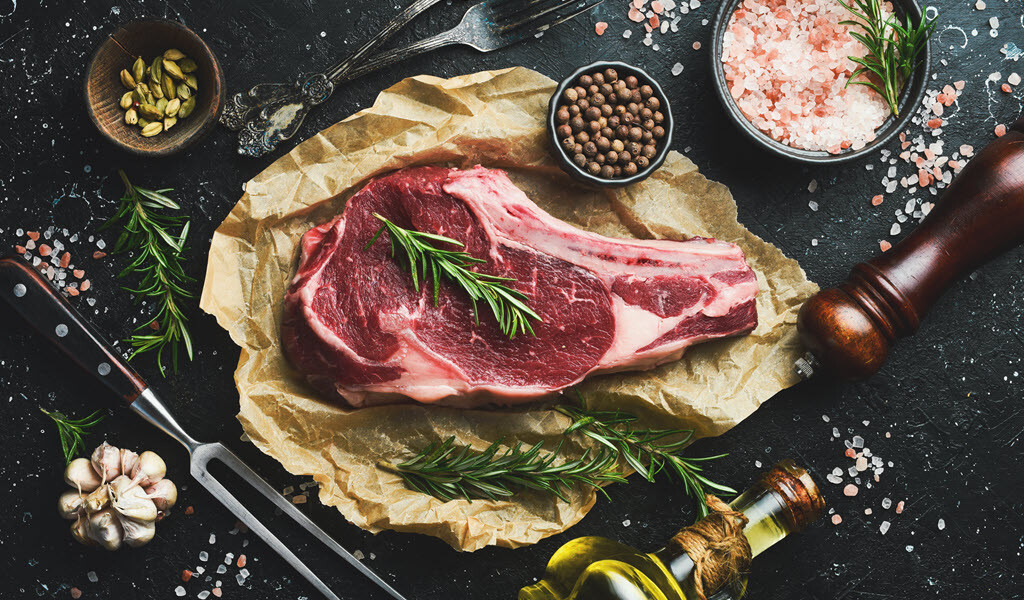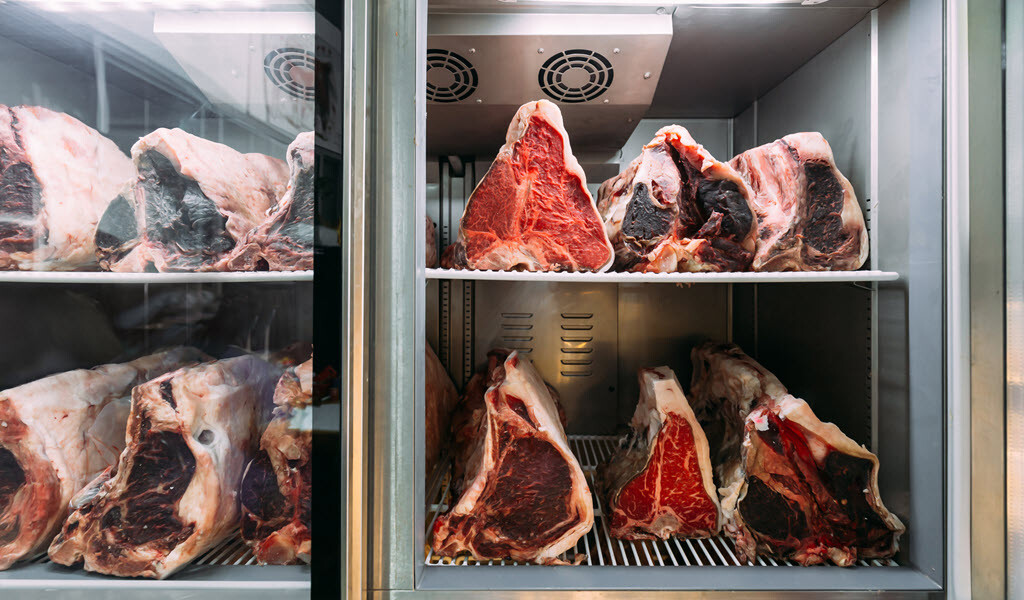Introduction
At Michael John’s, we age all of our steaks between 14 to 21 days. This ensures every steak is served tender, and juicy with complex flavors.

The Art of Steak Aging: Unveiling the Mystery
What makes aging a steak good? It’s a question that many food enthusiasts have asked. The process of aging steaks involves breaking down the meat’s connective tissues and enzymes, ultimately enhancing the texture, tenderness, and flavor. Aging can be done through two methods: dry aging and wet aging.
Dry Aging
Dry aging is the traditional method of aging steaks. It involves placing the meat in a controlled environment with specific temperature and humidity levels. The meat is left exposed to air, dehydrating and developing a unique crust. This process typically takes between 21 and 60 days.

Pros of Dry Aging
- Enhances flavor and tenderness
- Develops a unique crust
- Promotes a rich, nutty taste
Cons of Dry Aging
- Expensive and time-consuming
- Results in considerable weight loss due to dehydration
Wet Aging
Wet aging is a more modern method of aging steaks. The meat is vacuum-sealed in a plastic bag, allowing it to age in its juices. Wet aging typically takes between 4 and 14 days.

- Faster and more cost-effective
- Retains more moisture
Cons of Wet Aging
- Less flavor development compared to dry aging
- This can lead to a slightly metallic taste
The Science Behind Aging: What’s Going On?
When it comes to the question, “What makes aging a steak good?” understanding the science behind it is crucial. Aging meat primarily involves the breakdown of connective tissue and enzymes, which results in a tender, more palatable product.
Breakdown of Connective Tissue
Connective tissues, such as collagen, become more fragile over time, making the steak more tender. As the meat ages, its muscle fibers become more relaxed, further contributing to tenderness.
Enzymatic Breakdown
Enzymes present in the meat, such as cathepsins and calpains, break down proteins during aging. This breakdown results in the development of complex flavors and aromas, making the steak more delicious.
FAQs: Common Queries About Steak Aging
What makes aging a steak good?
A: Aging a steak enhances its tenderness, flavor, and overall texture by breaking down connective tissues and enzymes in the meat.
How long should a steak be aged?
A: The duration of aging depends on the method used. Dry aging typically takes between 14 and 60 days, while wet aging takes between 4 and 14 days.
Can I age a steak at home?
A: Yes, it’s possible to age steaks at home, but it requires careful monitoring of temperature, humidity, and sanitation to avoid spoilage.
Does aging a steak make it safe to eat rare?
A: Aging does not necessarily make a steak safe to eat rare. The safety of consuming rare meat depends on various factors, including the quality and handling of the meat before and during the aging process. Following proper food safety guidelines and cooking the meat to the recommended internal temperature is essential.
What types of steaks are best for aging?
A: High-quality, well-marbled cuts of beef, such as ribeye, striploin, and T-bone, are ideal for aging, as they have a higher fat content that enhances flavor and tenderness during the aging process.
Conclusion: The Art of Aging Steaks Demystified
So, what makes aging a steak good? The answer lies in the intricate dance of enzymes and connective tissues breaking down during aging. This remarkable transformation results in a tender, juicy, and flavorful steak that’s a true delight for the taste buds. Whether you prefer the classic dry-aged approach or the more modern wet-aged method, understanding the science and nuances of aging steaks can elevate your culinary game and help you appreciate the art of creating mouth-watering, unforgettable steaks.


